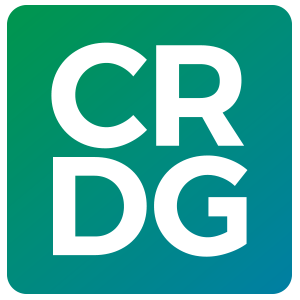
16 Feb CRDG Summer Programs: Exploring Our Island Home
 Summer Programs expanded again in 2006 to reach a broader range of students. Fueling the almost 50 percent growth in enrollment was the addition of a pair of classes for students entering the third grade and the program’s first foray into the arts, test prep, and driver’s education. In addition, Summer Programs partnered with the Archimedes Project to provide a course to support their ongoing research of science and math education through engineering.
Summer Programs expanded again in 2006 to reach a broader range of students. Fueling the almost 50 percent growth in enrollment was the addition of a pair of classes for students entering the third grade and the program’s first foray into the arts, test prep, and driver’s education. In addition, Summer Programs partnered with the Archimedes Project to provide a course to support their ongoing research of science and math education through engineering.
 Although the fire that destroyed the University Elementary School building occurred on the first day, forcing some classes to be relocated, it did not disrupt any of the students’ engaging exploration and learning. The program’s youngest students discovered the methods scientists use to track both the indigenous and introduced bird species of Hawai‘i. Students enrolled in the Robotics courses learned the effects of different gear ratios by building race cars. And although the theater went down in flames, the hopes of a successful production did not. The eight-person drama class wrote and produced a short play based on the Aesop fable “ The Boy Who Cried Wolf,” and the students did two performances of the play.
Although the fire that destroyed the University Elementary School building occurred on the first day, forcing some classes to be relocated, it did not disrupt any of the students’ engaging exploration and learning. The program’s youngest students discovered the methods scientists use to track both the indigenous and introduced bird species of Hawai‘i. Students enrolled in the Robotics courses learned the effects of different gear ratios by building race cars. And although the theater went down in flames, the hopes of a successful production did not. The eight-person drama class wrote and produced a short play based on the Aesop fable “ The Boy Who Cried Wolf,” and the students did two performances of the play.
Additional highlights of the summer included a donation of toys modified by Summer Programs students for use by children with disabilities to the Assistive Technology Resource Centers of Hawai‘i, and student participation in the restoration and maintenance of two ancient Hawaiian fishponds on the Windward coast.
 Exploration and discovery begin in the classroom and laboratory, and move outdoors into the field, where students experience first-hand the pivotal role that scientists play in the world around them. Above, students in the fifth grade Sky & Space class visited the Ka‘ena Point Tracking Station where they learned how scientists track local and global weather patterns. Clockwise from top left, sixth through eighth grade students in the Electronics & Engineering class modified toys for children with disabilities. The toys were later donated to the Assistive Resource Center of Hawai‘i. A student in the fourth grade Sea class used his coral and fish guide to identify the different marine species at Hanauma Bay. Third grade students in the Plants & Animals class visited a bee farm to see how honey is made, and at Lyon Arboretum they learned how scientists band birds in their effort to track the different species in Hawai‘i.
Exploration and discovery begin in the classroom and laboratory, and move outdoors into the field, where students experience first-hand the pivotal role that scientists play in the world around them. Above, students in the fifth grade Sky & Space class visited the Ka‘ena Point Tracking Station where they learned how scientists track local and global weather patterns. Clockwise from top left, sixth through eighth grade students in the Electronics & Engineering class modified toys for children with disabilities. The toys were later donated to the Assistive Resource Center of Hawai‘i. A student in the fourth grade Sea class used his coral and fish guide to identify the different marine species at Hanauma Bay. Third grade students in the Plants & Animals class visited a bee farm to see how honey is made, and at Lyon Arboretum they learned how scientists band birds in their effort to track the different species in Hawai‘i.




